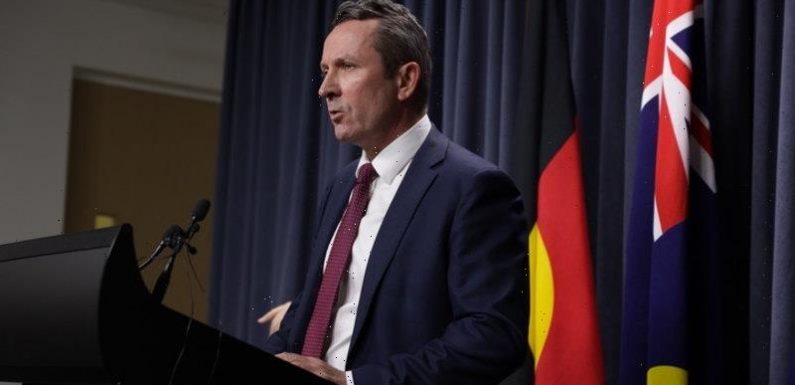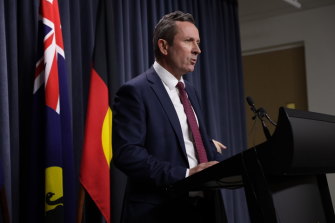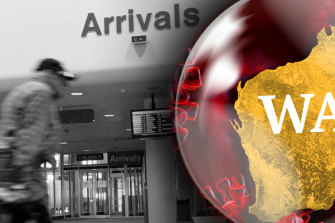
For our free coronavirus pandemic coverage, learn more here.
When Western Australia rejoins the rest of the world on February 5 it will have been 673 days since the ‘temporary’ hard border was first raised.
The McGowan government has expertly used the state’s geographic isolation and widespread population to keep COVID-19 at bay, with just 1124 cases and nine deaths —and only one of those was a locally acquired case.
WA Premier Mark McGowan announces the state’s hard border will come down on February 5. Credit:Hamish Hastie
It is an incredible achievement that has bought the state plenty of time and breathing room to respond to pandemic curveballs but, even as the Premier was announcing the long-awaited COVID-19 transition plan, it was obvious that yet again the time has not been used wisely and proactive decision-making is lacking.
Yesterday we were informed February 5 was the date etched in stone, along with what high-level changes we can expect when the borders drop.
Masks will be required on public transport and in rideshares; international and domestic arrivals will be allowed but will be subject to strict vaccine and testing requirements; and proof of vaccination will be required for high-risk venues such as stadiums and nightclubs. Low vax regions such as the Pilbara will also be subject to much tougher restrictions unless they can reach an 80 per cent double dose vaccination rate.
But day to day practical details were missing – what happens when someone tests positive for COVID? What happens to contacts at their workplace? What happens at their family home? What happens at hospitals? If a single parent gets COVID how will they manage their children and continue to run their household?
It was like handing in an assignment with an incredible executive summary and first chapter, but the rest of the document was filled with pages scribbled with ‘TBC’.
When asked about specifics around workplaces WA Premier Mark McGowan said a COVID-positive test would result in a period of isolation but the other details would be ‘worked through’ in the lead up to February 5.
“February 5 is still more than seven weeks away … we can watch what happens in South Australia, Queensland and Tasmania and calibrate our rules around that to match what works in those states,” he said.
With South Australia currently dealing with the bin fire that is allowing COVID-19 to enter a virus-free paradise, there is merit in a watch and wait approach, but the virus has been breathing down our necks for nearly two years so policies around dealing with individual cases with a vaccination rate of 90 per cent should not be that hard to devise.
McGowan’s comments will mean more unnecessary uncertainty, particularly for small businesses, trying to plan their next year.
One busy sole trader I know whose business is people-facing and based entirely on the road said she was concerned about the rules around what happens when she is deemed a casual contact.
“Do we have to shut down and isolate for two weeks every time this happens?” she said.
It is a fair question that was notably unanswered in one of the biggest COVID-19 press conferences since the pandemic began.
Mr McGowan rightly praised Western Australians for doing their bit and helping the state achieve such good health outcomes.
With the time afforded to it, the government should have been developing these policies as soon as it had the confidence around its COVID defences – in my mind this occurred in July when it successfully stopped a Delta outbreak.
Since then, we haven’t had a single outbreak or leak in hotel quarantine to occupy the government’s time so what has it been doing?
The WA bubble will burst on February 5. Credit:WAtoday
The advent of Omicron is less of an excuse when both the Premier and the state’s Chief Health Officer Andy Robertson recommended we proceed as planned toward the February 5 date because early indications are that the new strain is not as severe as Delta.
WA was first told of its transition plan on November 5, but we had to wait until we reached 80 per cent double dose vaccination to find out the reopening date.
When it comes to the future of the state it’s time the state stopped drip-feeding the details and handed in the rest of the assignment.
The Morning Edition newsletter is our guide to the day’s most important and interesting stories, analysis and insights. Sign up here.
Most Viewed in National
From our partners
Source: Read Full Article

